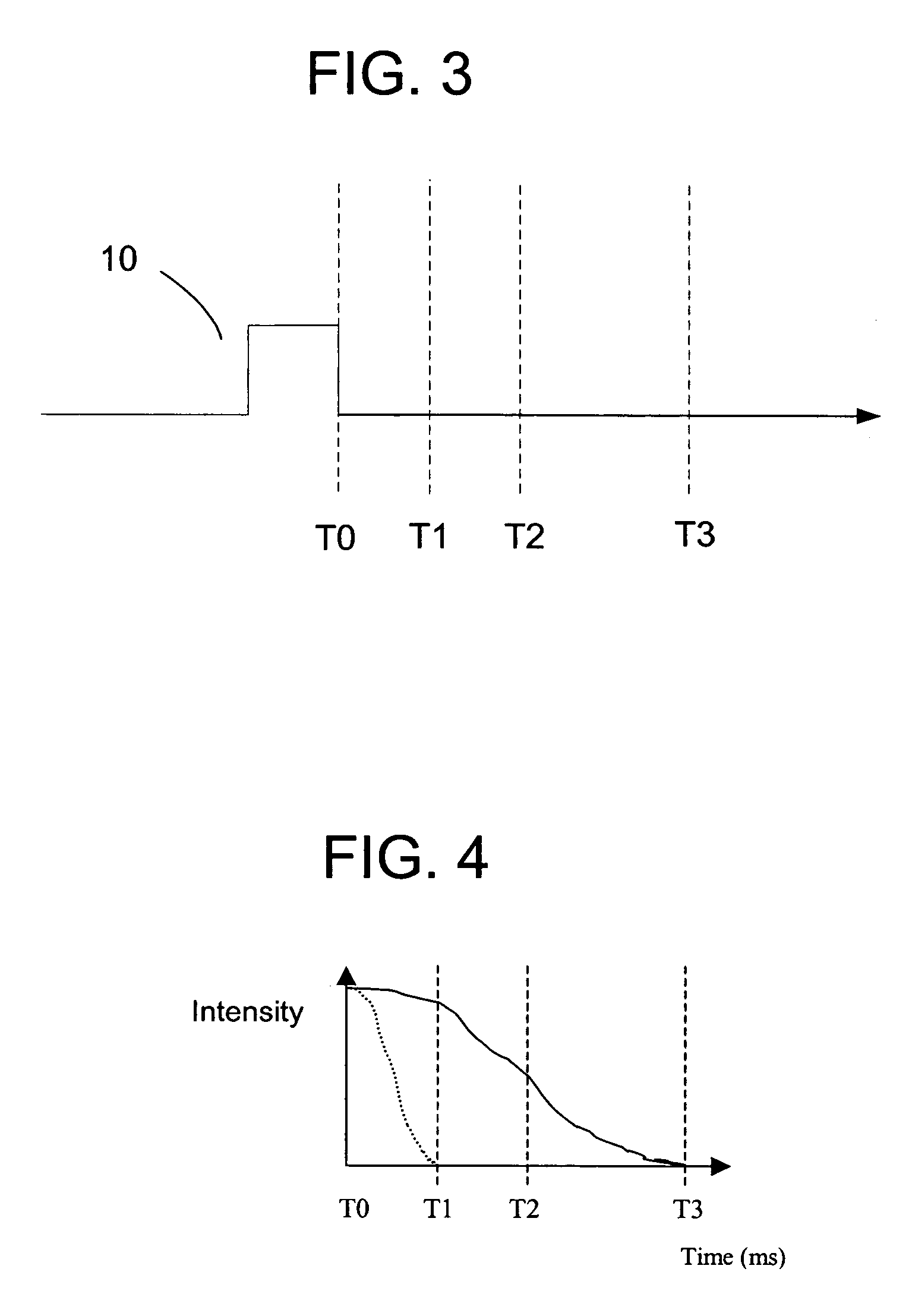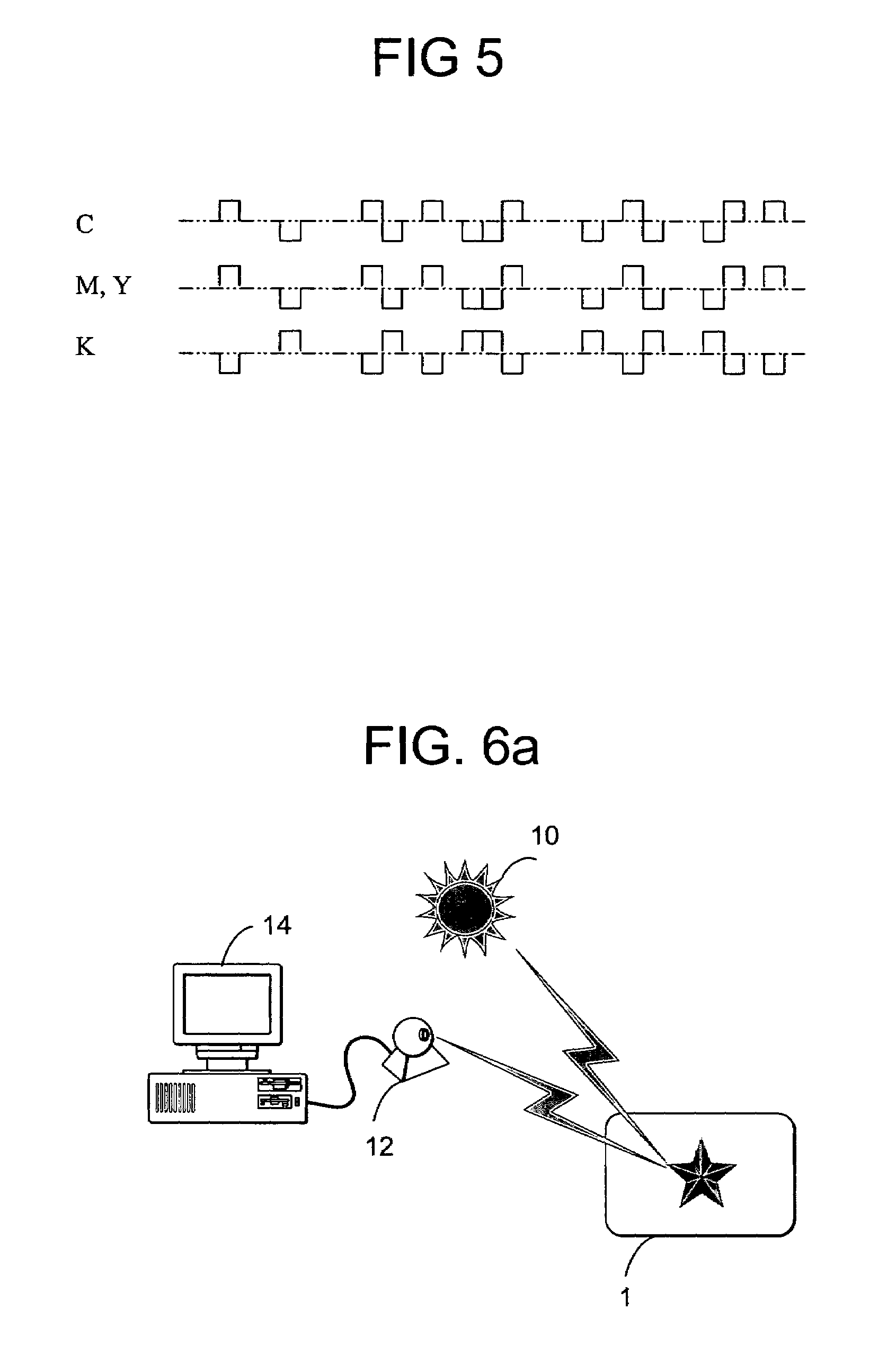Low visibility watermark using time decay fluorescence
a fluorescence and low-visibility technology, applied in the field of digital watermarks, can solve the problems of not being as easy to spot pirates as they used, affecting the quality of counterfeit products,
- Summary
- Abstract
- Description
- Claims
- Application Information
AI Technical Summary
Problems solved by technology
Method used
Image
Examples
Embodiment Construction
Introduction
[0026]Inks and dyes have recently emerged with unique fluorescent properties. Some of these properties allow for variable fluorescence (or emission) decay times. Typical decay times can be varied from less than a microsecond to tens of milliseconds and more. A CCD scanner and microprocessor can measure the decay emissions from the inks and dyes. Other filtered optical capture devices (cameras, digital cameras, web cameras, etc.) can be suitably interchanged with the CCD scanner. These inks and dyes (both hereafter referred to as “ink”) also include unique emission characteristics, such as emitting in a particular frequency band, which allows for frequency-based detection. Other unique characteristics include varying the frequency of light needed to activate the ink and the color of the ink's fluorescence. These characteristics can be variously combined to produce customized ink. These types of ink are typically excited with UV light and emit from ultraviolet (UV) to infr...
PUM
 Login to View More
Login to View More Abstract
Description
Claims
Application Information
 Login to View More
Login to View More - R&D
- Intellectual Property
- Life Sciences
- Materials
- Tech Scout
- Unparalleled Data Quality
- Higher Quality Content
- 60% Fewer Hallucinations
Browse by: Latest US Patents, China's latest patents, Technical Efficacy Thesaurus, Application Domain, Technology Topic, Popular Technical Reports.
© 2025 PatSnap. All rights reserved.Legal|Privacy policy|Modern Slavery Act Transparency Statement|Sitemap|About US| Contact US: help@patsnap.com



